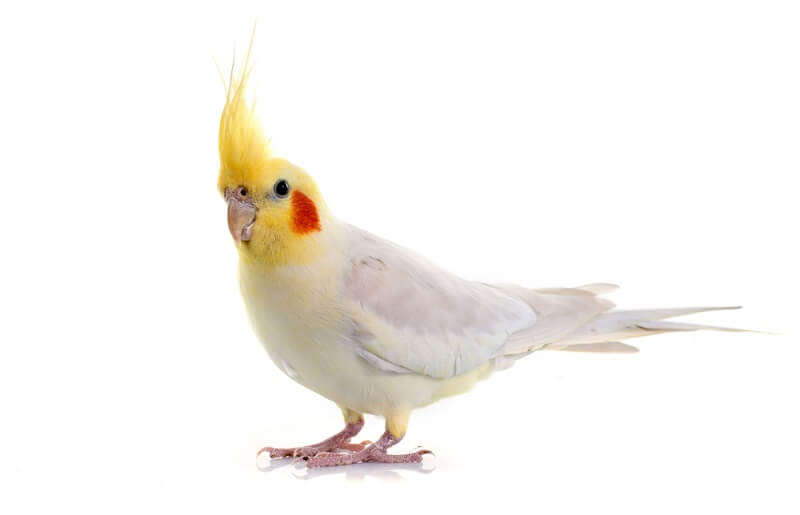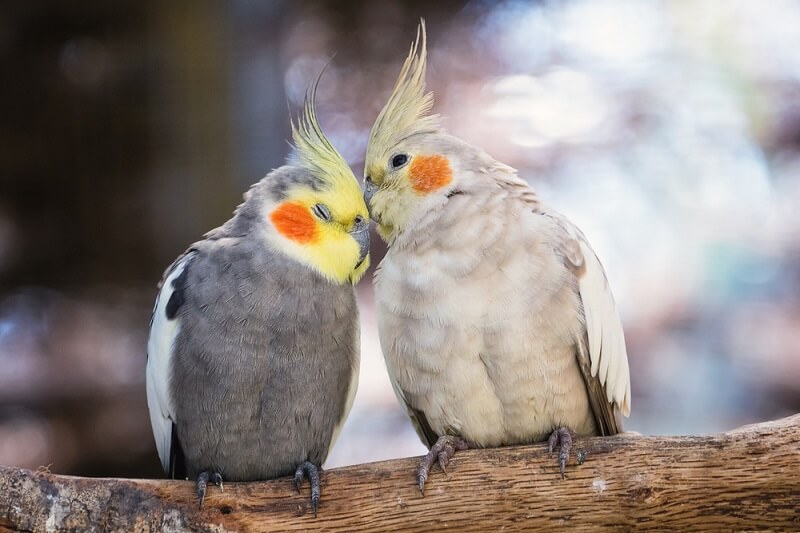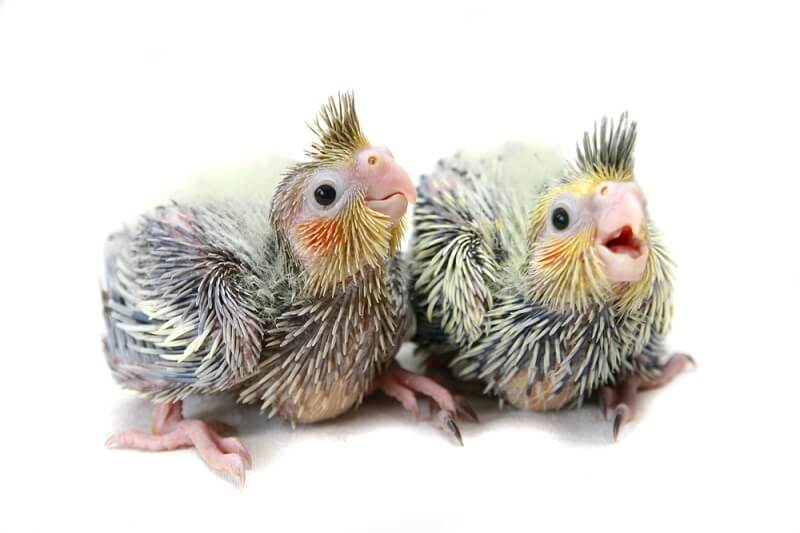
| Kingdom | Animalia |
| Phylum | Chordata |
| Class | Aves |
| Order | Psittaciformes |
| Family | Cacatuidae |
| Genus | Nymphicus |
| Species | Nymphicus hollandicus |
| Niche | Seed-eating Tree Dweller |
| Length | Up to 13 in (33 cm) |
| Weight | Just over 1 oz (30-40 g) |
| Lifespan | Typically around 8 years, though some have reached 20 years |
| Social Structure | Flocks |
| Conservation Status | Least Concern |
| Preferred Habitat | Open scrubland, woodlands, grasslands |
| Average Clutch Size | 4-8 eggs |
| Main Prey Species | Grass seeds, nuts, seeds, corn, grains |
| Predators | Predatory birds, reptiles, mammals |
The Basics
The cockatiel is a species of parrot-like bird in the cockatoo family (Cacatuidae). Though many cockatoo species are difficult to keep in captivity, the cockatiel is much easier than most and has become a pet across the globe. Cockatiels can be identified by their prominent head crest – a group of feathers the cockatiel can control to communicate various emotions.
The cockatiel is native to Australia and is closely related to many of the parrot species found on the continent. However, recent genetic evidence has placed the cockatiel in a genus of its own, much more closely related to cockatoos and other broad-tailed parrots. In the wild, cockatiels live in large, highly-social flocks that migrate together to find food.

While cockatiels are smaller than many members of the cockatoo family, they are much larger than most parakeets and budgies. However, cockatiels are not known for any ability to mimic human speech like many members of the parrot order (Psittaciformes). While they will not mimic speech, cockatiels often bond closely with their owners – especially if they were born into captivity and saw humans immediately.
Interesting Insights from the Cockatiel!
While many people own cockatiels around the world, few people know just how special these birds are. In fact, they are the perfect species to help explain a number of complex biological concepts!
Visual Communication
Cockatiels can be very expressive with their head crest feathers. Simply by moving the feathers to different positions, cockatiels can show their “mood” to other cockatiels and even their owners. Though each individual is unique and has its own personality, cockatiels typically use a well-established display system.
A straight-up crest can mean two things: danger or curiosity. It essentially means, “Hey, look at that!” Pet cockatiels may put their crest straight up when looking at something new, after being startled, or when they are offered a novel treat. By contrast, when the crest is all the way down the cockatiel is frightened or aggressive. Some cockatiels may even hiss to add to this visual display.

Interestingly, cockatiels are far from the only animal that uses visual cues to communicate. Many animals – from humans to peacock shrimp – create visual impressions with their body or coloration in order to send a message. Within human communication, we call this “body language” – and it may be as or more important than the actual words we say. For example, try saying “Congratulations” with a smile and then with no expression. If the second time sounded sarcastic, it’s likely because your face did not express the joy needed to convey genuine emotions.
Imprinting
Like many bird species, baby cockatiels imprint on the first thing they see after they hatch. In the wild, this behavior immediately creates birds that are ready to join the social fabric of the flock. In captivity, this creates birds that bond closely with their owners. While this is highly desirable for most owners, it also means that cockatiels easily get depressed if their owners are gone for a long period of time.

For this reason, it is best to have more than one cockatiel. Together, the pair can support each other socially if the owners are gone for an extended period of time. If left completely alone, cockatiels will often become depressed and can even become ill.
Imprinting is a very powerful process that shapes many bird species throughout their lives. There are numerous examples of birds like geese, ducks, and parrots imprinting on their owners and staying with them wherever they go.
